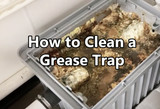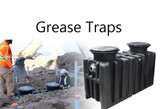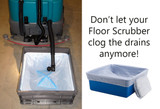How to install a floor drain strainer
One of the best ways to prevent floor drain backups is to install a Drain-Net™ Floor Drain Strainer. We offer many types including plastic, mesh, and stainless steel strainers, but the process of installing them is the same for all of them.
Step 1 (Optional): If your facility has experienced drain clogs and backups we recommend getting drain jetter to clear out the pipes. Our floor drain strainers are a preventative product, but they cannot remove items or debris that is currently in the pipes. Jetting your drains gives your pipes a fresh start, and the floor drain strainers will help keep your pipes free of potential clogs.
Step 2: When you are ready to install, remove the floor drain cover or grate. This will probably require a screw driver. Be sure to put the screws in a safe place so that you don't lose them.
Step 3: Ensure you have selected the right size drain strainer. (Please measure before you buy.) Most drains will be 2", 3", or 4". Sometimes there are 3.5" and 6" drain pipes. Our floor drain strainers are either tapered or have an edge so that they are wider at the top and will not fall into the pipe. So for example our 4" strainer will measure 4.5" at the top so that it will sit in a 4" drain.

Step 4: If the drain wall has buildup, you may need to clean out the drain. We offer drain brushes, foam cleaners, and other products to help with this. Cleaning the drain wall will allow for a better fit with the strainer, and will help eliminate fruit fly breeding grounds.
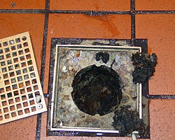
Step 5: Insert the Drain-Net™ floor drain strainer into the floor drain.

Step 6: Put the drain grate / cover back on the drain.
Step 7: Monitor the floor drain frequently to see how quickly the strainer fills up. The amount of time it takes for the strainer to fill up depends on how much debris is going into the drains. So it could fill up in a day, or it could take months. Once you determine the "fill-up" frequency, make note of it in the facilities routine maintenance schedule.

Ongoing maintenance: When the strainer is full, remove the cover and empty the strainer contents into the trash. Place the floor drains strainer back into the drain.
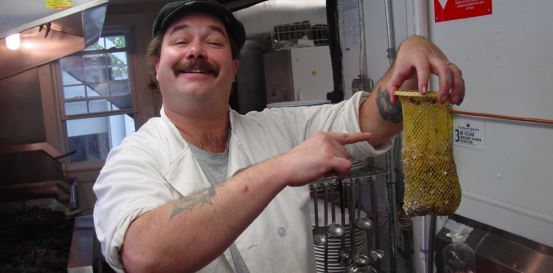
More products you might be interested in!
 |  |  |
 |  |  |
Recent Posts
-
How to clean a Grease Trap
Cleaning a grease trap is an important maintenance task to prevent clogs, odors, and compliance issu …16th Dec 2024 -
What does Grease Trap do?
Grease traps, also known as grease interceptors, are plumbing devices designed to capture and separa …4th Jun 2024 -
Where to dump a Floor Scrubber?
An important aspect of operating a floor scrubber is the proper dumping of the cleaning solution and …2nd May 2024


